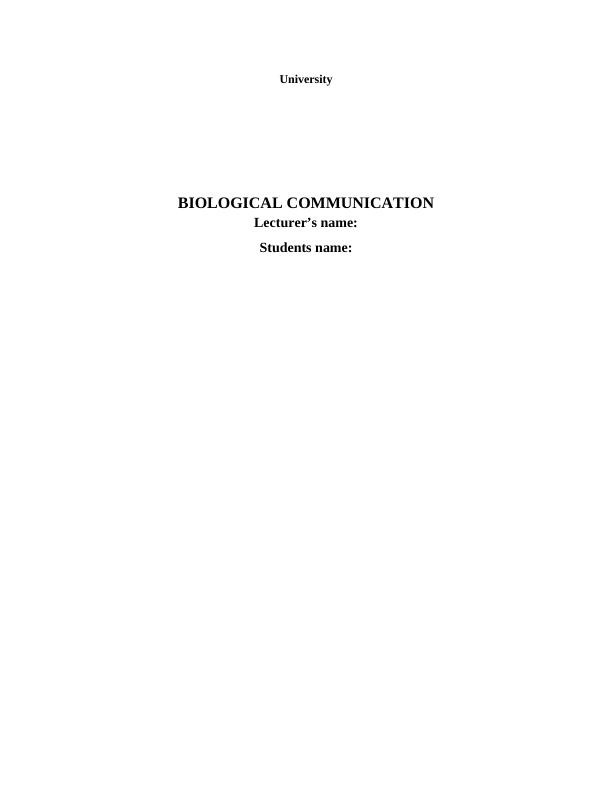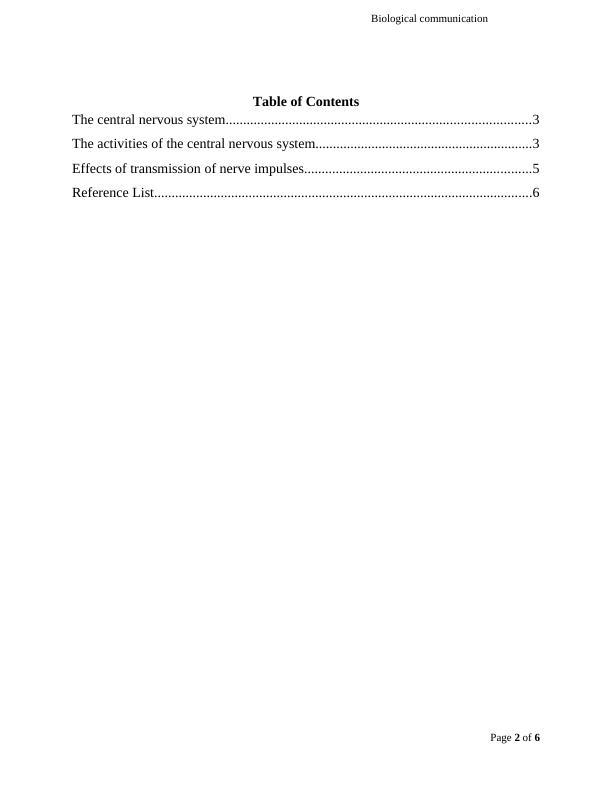Biological Communication
Added on 2023-04-03
6 Pages1311 Words129 Views
End of preview
Want to access all the pages? Upload your documents or become a member.
Biological Communication- Doc
|9
|1958
|116
STRUCTURE AND FUNCTION OF NERVOUS SYSTEM
|10
|1968
|319
LESSON 2: BIOLOGY AND PSYCHOLOGY September 5-9, 2022.
|14
|411
|49
Structure of Central Nervous System, Sensory Connector and Motor Neurons, Nerve Impulses, Autonomic Nervous System, Effects of Nicotine
|7
|1485
|305
Human Nervous System and Endocrine System PDF
|11
|2148
|147
Nervous System Biology
|11
|3455
|196



